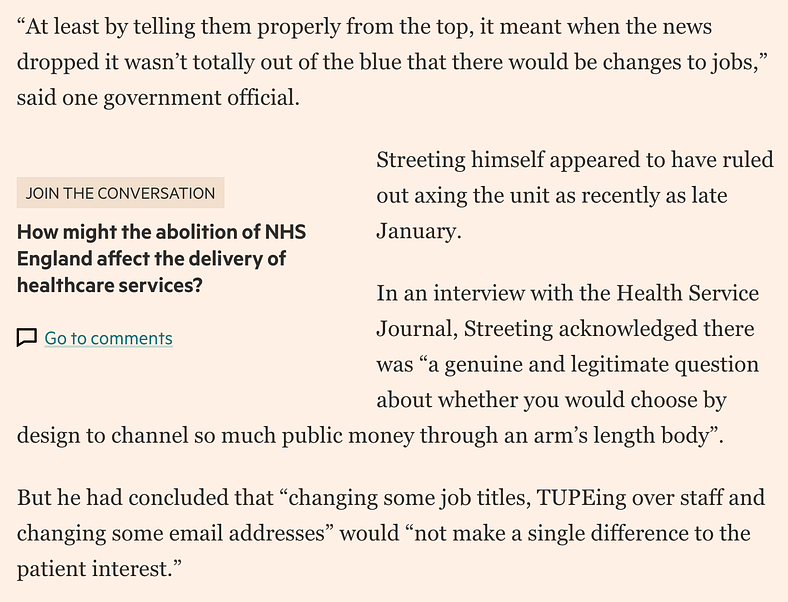A simple prompt placed inside FT articles uncovered how readers think and what they value. The experiment shows how small design choices can deepen engagement across our journalism.
This article was written by Bella Cockarill, Senior Product Manager at Financial Times
FT readers often say they value the comments section.
Below the line, comments can be a secondary source of thoughtful analysis, entertaining ripostes, and eccentric but no-less-insightful history lessons.
When it’s working well, the comment section becomes an extension of FT journalism, a place where people reflect, question, and exchange ideas.
That kind of exchange does more than add to the tone of the site. It builds habits, brings people back, and adds something meaningful to the reading experience. We wanted to work out how we could support it.
The data backs this up. Active B2C subscribers who write comments can be up to four times more engaged than those who do not. Seven percent of habitual users post comments, compared to a tiny proportion among non-habitual users. We know that posting a comment has the single biggest impact on habit strength. But it is also one of the rarest behaviours on the site.
What’s more, there is a large group of readers who rarely venture into the comments at all. Some skip them, others may not realise they are there. We saw an opportunity to make this part of the experience more visible and inviting, especially for those who might appreciate it but just need a reason to look.
A quiet intervention

We tested a small idea on FT.com. About two-thirds of the way through an article, we added a short question. The aim was to encourage readers to pause, think a little more deeply, and, if they felt moved, join the conversation in the comments.
The question didn’t come from the writer or editor of the piece. Instead, we used generative AI to suggest three options, based on the content of the article. These were then reviewed by our Editorial community team, who selected the best one or made edits if needed. Nothing was published without human oversight. The ambition is to enable a simple, but time-consuming task to be done quickly at scale across the newsroom.
Behind the scenes, we gave the model a bit of guidance. We used a chain-of-thought style prompt to help it reflect on the article first, then shift focus toward the kinds of questions that might spark discussion. Once the model had that direction, we added a few specific instructions around tone and style. These included things like keeping the question in the right tense, avoiding abbreviations, and using clear opening phrases to invite reflection. Much of this was shaped by what we learned in research sessions with the Editorial community team.
The goal wasn’t to push a particular opinion or drive clicks. It was about giving editorial a simpler way to scale an idea to increase subscriber engagement and habit.
What happened
The results were modest but encouraging. Comment views rose by 3.5 percent. More interesting, though, was the shift in tone.
As one team member put it:
“Since we added the AI discussion prompt, the tone of the comments has definitely improved. By nudging readers to focus on a specific topic, it’s helped keep conversations on track and reduced off-topic or unproductive rants.”

The question felt natural in the flow of the article. Readers seemed to treat it less as a feature and more as a reason to keep thinking.
As we had hoped, it also helped reach a new audience — 11.5 percent of readers who hadn’t viewed any comments in the previous month did so this month. A small, well-placed question helped bring them into a part of the article experience they might normally overlook.
What’s next
We’re now planning to experiment with the same feature in our mobile apps. If it works well there, we aim to make it available more widely.
This wasn’t a complicated experiment. The value came from keeping it simple, applying editorial judgement, and listening to what readers respond to. We learned that the right question doesn’t just lead to replies. It creates space for better conversations.
At FT Strategies, we have a deep knowledge of AI, technology & data, and what you need to future-proof your business. If you would like to learn more about our expertise and how we can help your company grow, please get in touch.
%20(46).png)

.png?width=768&name=AI%20for%20content%20(1).png)

